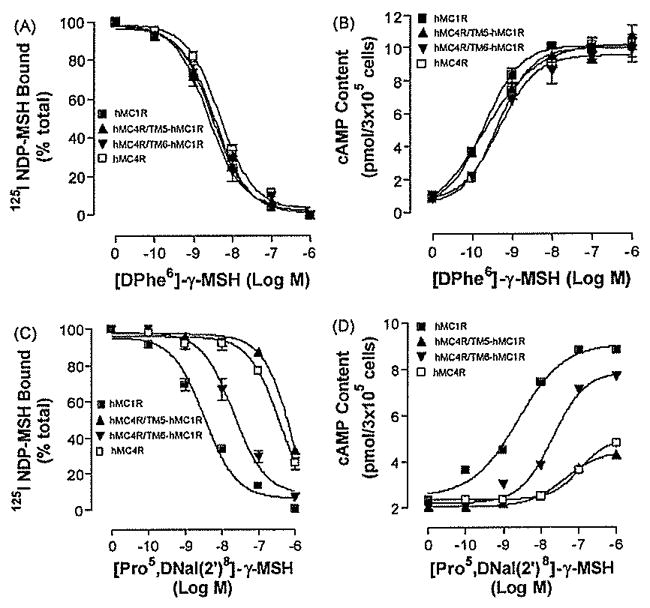Fig. 4.

Binding affinities and potencies of [DPhe6]-γ-MSH and [Pro5, DNaI(2′)8]- γ-MSH at hMC4R/TM5hMC1R and hMC4R/TM6hMC1R. Panel A depicts the binding affinity of [DPhe6]- γ-MSH as determined by inhibition of 125INDP-MSH binding at the chimeric receptors. Panel B represents the ability of [DPhe6]-γ-MSH to stimulate the production of intracellular cAMP at the chimeric receptors. Panel C depicts the binding affinity of [Pro5, DNaI (2′)8]- γ-MSH as determined by inhibition of 125I NDP-MSH binding at the chimeric receptors. Panel D represents the ability of [Pro5, DNaI (2′)8]- γ-MSH to stimulate the production of intracellular cAMP at the chimeric receptors. Data points represent the mean ± S.E.M. of at least three independent experiments.
